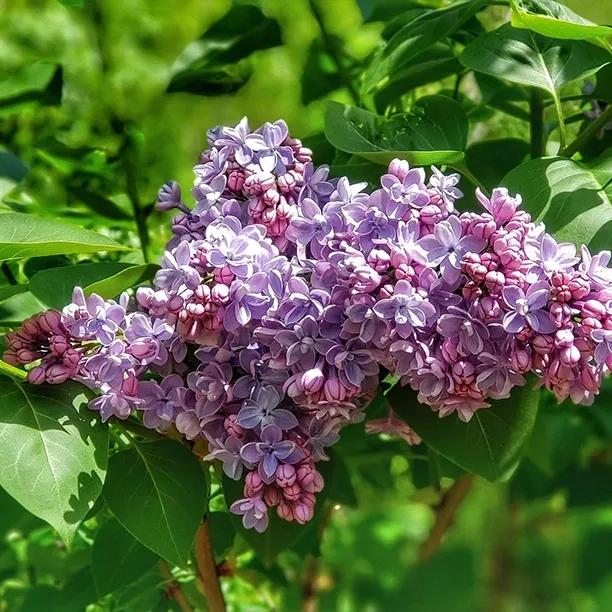Katherine Havemayer Lilac Plants
The details
Syringa vulgaris 'Katherine Havemeyer'
Pot Grown Shrubs- Height: 6m
- Spread: 3m
- Colour: Mauve
- Scent: Strong, sweet
- Flowering: May/June
- Flowers: double
- Leaves: heart shaped
- RHS Award of Garden Merit
- Pot Grown: Year Round Delivery
Recommended extras
Description
Syringa Vulgaris 'Katherine Havemeyer' Hedging
The elusive colour of Syringa vulgaris Katherine Havemeyer makes this double lilac one of the great spring garden plants. The panicles of flowers shimmer between a lavender pink and a mauvey blue depending on the time of day and the intensity of the light. None of the other lilac hedge plants that we sell are remotely similar. The double flowers are generous and on the large side and are complemented by the dark green leaves that are an attractive heart shape. The bewitching scent will flood your garden and be a magnet for insects and butterflies that make useful pollinators for other plants as well. Tolerant of all soils and resistant to the effects of pollution, Katherine Havemeyer will grow into a reasonable sized, slightly spreading tree with a pleasing symmetrical shape and flowers best in full sun.
Make Katherine Havemeyer feel at home
Katherine Havemeyer has enough integrity as a tree to stand in her own right as large specimen shrub in a quiet and scented corner of the garden. Equally, she is gregarious enough to look good at the back of a border - especially if you keep her trim and in shape - when combined with other flowers like Digitalis purpurea, the common foxglove, or some of the pink Aquilegias. A logical companion to plant close by and to take over the flowering mantle would be any of the buddlejas. Free Petite Lavender displays similar colouring and is a new and more compact variety, while threading a clematis like The Duchess of Albany through the lilac's branches will delude and delight most into thinking that she is still flowering right through to October. Any Pruning Group 3 clematis would suit because you only need to cut them down at the end of the season, and they scramble up a tree without any fiddly training required. All lilacs make wonderful cut flowers which is partly why they were so popular in Edwardian times. Hard pruning each year will encourage larger flowers if you grow lilacs specifically for flower arranging. Once you have cut a stem, strip the leaves from it because they are so large and will cause the flower to wilt prematurely otherwise; sear the stem in boiling water for ten seconds; then soak it in cold water over night before arranging. The intriguing colour of Katherine Havemeyer is a godsend for florists and goes equally well with silvers, deep purples and most pinks.
Features
- Height: 6m
- Spread: 3m
- Colour: Mauve - Lavender-Pink
- Scent: Strong, sweet
- Flowering: May/June
- Flowers: double
- Leaves: heart shaped and dark green
A little about Katherine Havemeyer Lilac
Syringa vulgaris originally came from what we would now call Turkey. Suleiman the Magnificent of the Ottoman empire sent some of these scented plants to Ferdinand, the Holy Roman Emperor in 1563. The plants were then disseminated around Europe and cultivated by such great names as Tradescant in England. But it was a Frenchman, Victor Lemoine an established nursery man, who had the wit, when confined to Nancy during the Franco-Prussian war in 1870, to try to cross a rather weedy double lilac called Azurea Plena with the more vigorous single forms of Syringa oblate and S. vulgaris. The resultant hybrid's stamens were replaced by petals and so in 1890 the first proper French double lilac was cultivated - the fantastic, white Madame Lemoine. From there Lemoine and his family hybridised over 215 lilacs of varying colours, size and interest and Katherine Havemeyer was one of these. It was recognised by the RHS in 1922 and has remained a popular choice in gardens all over the world ever since.


